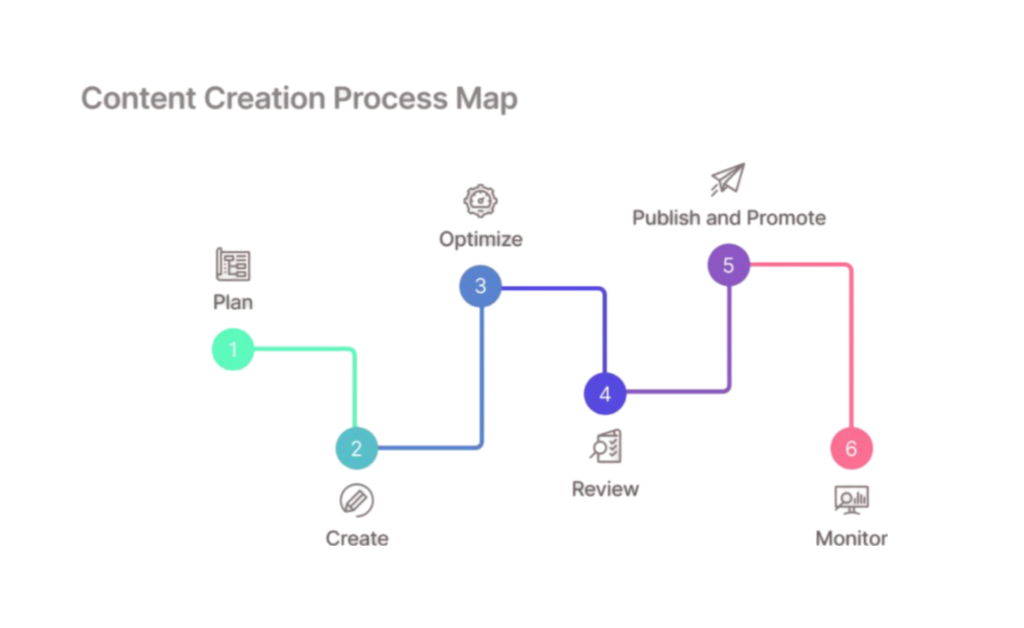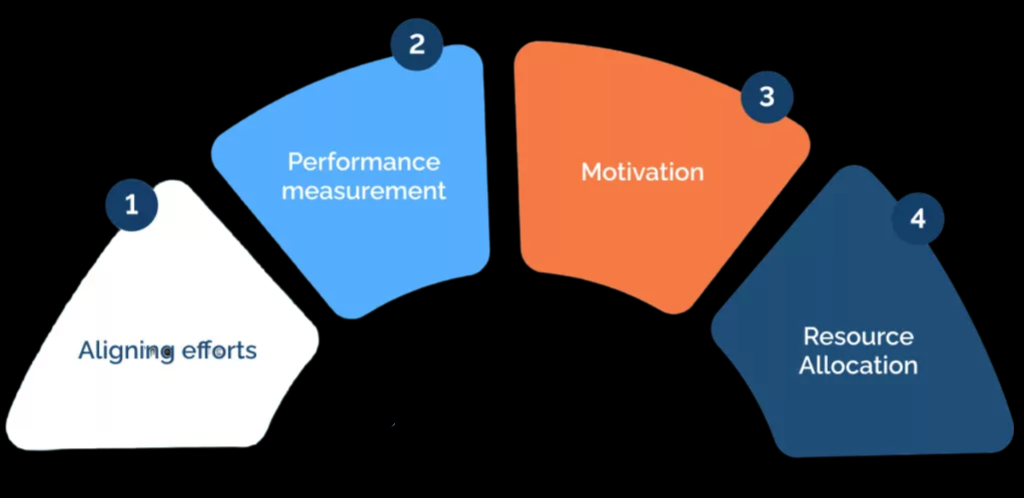The digital landscape is ever-evolving, and content creation has become a vital component of any successful marketing strategy. However, as businesses grow and competition intensifies, the need to scale content creation becomes increasingly apparent. Whether you’re a small startup or an established brand, scaling your content creation efforts is essential to maintaining a strong online presence and engaging with your target audience.
In this blog post, we will explore the ins and outs of scaling content creation. We’ll delve into the importance of scaling, the benefits it brings, and how to assess your current content creation process. We’ll also discuss setting clear goals and objectives, developing an efficient content creation strategy, building a reliable team, and automating and streamlining content creation processes.
Importance of scaling content creation:
In today’s digital age, scaling content creation has become a critical aspect of any successful marketing strategy. Here’s why scaling content creation is crucial for businesses:
- Increased brand visibility: By scaling content creation, businesses can produce a larger volume of high-quality content, which leads to increased brand visibility and reach.
- Improved search engine rankings: Producing a higher volume of valuable content helps businesses improve their search engine rankings and attract more organic traffic.
- Enhanced audience engagement: Scaling content creation allows businesses to consistently engage with their target audience through valuable and relevant content, fostering stronger connections and building brand loyalty.
- Establishing thought leadership: By consistently producing high-quality content, businesses can position themselves as thought leaders in their industry, gaining credibility and trust from their audience.
- Supporting content marketing strategies: Scaling content creation provides businesses with the necessary resources to support their content marketing strategies effectively, meeting the demands of their target audience and achieving their marketing goals.
Benefits of scaling content creation:

Scaling content creation offers numerous benefits that can significantly impact a business’s online presence and marketing efforts:
- Increased brand visibility: Scaling content creation allows businesses to produce a larger volume of content, expanding their reach and increasing brand visibility among their target audience.
- Improved search engine rankings: Producing more high-quality content helps improve search engine rankings, making it easier for potential customers to find and engage with the business.
- Enhanced audience engagement: Scaling content creation enables businesses to engage with their audience through valuable and relevant content consistently, fostering stronger relationships and encouraging interaction.
- Establishing thought leadership: By consistently producing high-quality content, businesses can position themselves as industry thought leaders, gaining credibility and trust from their audience.
- Driving organic traffic: Greater content production results in more opportunities for organic traffic, as search engines recognize and reward businesses that consistently produce valuable content.
- Supporting content marketing strategies: Scaling content creation provides businesses with the necessary resources to support and execute their content marketing strategies effectively, ensuring consistency and alignment with their goals.
- Expanding reach and attracting new audiences: With increased content production, businesses can reach new audiences and expand their customer base, driving growth and attracting potential customers.
- Maximizing content ROI: Scaling content creation maximizes the return on investment by repurposing content into different formats, reaching a wider audience, and increasing the lifespan and value of each content piece.
Assessing Your Current Content Creation Process

Evaluating current content creation capacity:
- Assess the current resources, including the content team, tools, and budget, available for content creation.
- Determine the current content production rate and capacity to identify any limitations or bottlenecks.
Identifying bottlenecks and challenges:
- Analyze the content creation process to identify any bottlenecks or challenges that may hinder scalability.
- Common bottlenecks include limited resources, lack of efficient workflows, and content approval delays.
Analyzing content performance and audience feedback:
- Evaluate the performance of existing content to identify areas for improvement and optimization.
- Gather audience feedback through surveys, comments, and social media interactions to understand their preferences and needs.
Setting Clear Goals and Objectives

Defining your content marketing objectives:
- Clearly define the goals and objectives of your content marketing strategy, such as increasing brand awareness, driving website traffic, or generating leads.
- Align these objectives with your overall business goals to ensure coherence and effectiveness.
Identifying target audience and content needs:
- Conduct thorough research to identify your target audience and understand their demographics, interests, pain points, and content preferences.
- Determine the types of content that resonate with your target audience and align with their needs and preferences.
Aligning goals with overall business objectives:
- Ensure that your content marketing goals align with your overall business objectives to maximize the impact of your content efforts.
- Consider how content creation can support other areas of your business, such as product launches, lead generation, or customer retention.
Developing an Efficient Content Creation Strategy

Creating a content calendar:
- Create a content calendar that outlines your content topics, formats, and publication schedule.
- Use tools like editorial calendars or project management software to streamline content planning and collaboration.
Determining content types and formats:
- Identify the types of content that resonate with your target audience, such as blog posts, videos, infographics, or podcasts.
- Consider repurposing content into different formats to reach a wider audience and maximize content ROI.
Delegating tasks and responsibilities:
- Assign clear roles and responsibilities to your content team members, including content creators, editors, designers, and SEO specialists.
- Communicate expectations, deadlines, and quality standards to ensure efficient collaboration and accountability.
Establishing a streamlined workflow:
- Streamline the content creation process by implementing efficient workflows and utilizing project management tools.
- Define clear approval processes, content review cycles, and feedback mechanisms to ensure smooth content production.
Building a Reliable Team
Hiring content creators and editors:
- Identify the skills and expertise required for your content creation team and hire talented individuals accordingly.
- Conduct thorough interviews, review portfolios, and consider freelance writers or agencies for additional support.
Collaborating with freelancers or agencies:
- Leverage the expertise of freelance writers, designers, or agencies to scale content creation during peak periods or for specialized content needs.
- Communicate expectations, deadlines, and brand guidelines to ensure consistency and quality.
Training and empowering team members:
- Provide training and professional development opportunities to enhance the skills of your content team.
- Empower team members to take ownership of their work and encourage creativity and innovation.
Implementing effective communication and feedback channels:
- Establish regular communication channels, such as team meetings or project management tools, to facilitate collaboration and feedback.
- Encourage open and transparent communication to foster a positive and productive work environment.
Automating and Streamlining Content Creation Processes

Utilizing content management systems (CMS):
- Implement a robust CMS to streamline content creation, publishing, and management processes.
- Choose a CMS that offers features like content scheduling, version control, and collaboration tools.
Implementing content creation tools and software:
- Explore content creation tools and software that can automate repetitive tasks, such as keyword research, image sourcing, or content optimization.
- Utilize tools for content ideation, topic generation, and content performance tracking.
Automating repetitive tasks and workflows:
- Identify repetitive tasks in the content creation process and automate them using tools or software.
- Automate processes like content distribution, social media scheduling, or email marketing to save time and increase efficiency.
Enhance AI and machine learning technologies:
- Explore AI-powered tools and technologies that can assist in content creation, optimization, and personalization.
- Utilize machine learning algorithms to analyze data and generate insights for content strategy improvements.
Outsourcing and Co-Creation Opportunities
Partnering with industry influencers and experts:
- Collaborate with industry influencers and experts to co-create content or leverage their expertise for guest posts, interviews, or webinars.
- This can help expand your reach, enhance credibility, and attract a wider audience.
Encouraging user-generated content:
- Engage with your audience and encourage them to create and share user-generated content related to your brand or products.
- User-generated content can provide valuable social proof, increase engagement, and foster a sense of community.
Collaborating with other brands for co-creation:
- Explore opportunities to collaborate with complementary brands or businesses to co-create content.
- Joint webinars, blog post collaborations, or social media campaigns can help reach new audiences and create mutually beneficial partnerships.
Outsourcing specific content creation tasks:
- Identify specific content creation tasks that can be outsourced to freelancers or agencies, such as graphic design, video editing, or content localization.
- Outsourcing can help alleviate the workload, access specialized skills, and ensure high-quality content production.
Ensuring Consistency and Quality

Establishing content guidelines and style guide:
- Develop clear content guidelines and a style guide that outlines brand voice, tone, formatting, and other editorial standards.
- Ensure that all content creators and editors adhere to these guidelines to maintain consistency across all content pieces.
Implementing a thorough editing and review process:
- Establish a robust editing and review process to ensure that all content goes through multiple rounds of review for quality assurance.
- Assign dedicated editors or proofreaders to review content for grammar, spelling, clarity, and adherence to brand guidelines.
Conducting regular content audits and updates:
- Regularly audit your existing content to identify outdated or underperforming pieces.
- Update and optimize existing content to align with current SEO best practices, industry trends, and audience preferences.
Monitoring content performance and making data-driven decisions:
- Track and analyze content performance metrics, such as website traffic, engagement, conversions, and social media metrics.
- Use data insights to make informed decisions about content optimization, topic selection, and distribution strategies.
Measuring and Analyzing Content Performance
Defining key performance indicators (KPIs):
- Identify key performance indicators that align with your content marketing objectives, such as website traffic, conversion rates, or social media engagement.
- Set specific, measurable, achievable, relevant, and time-bound (SMART) goals for each KPI.
Tracking and analyzing content metrics:
- Utilize analytics tools to track and analyze content metrics, such as page views, bounce rates, time on page, or click-through rates.
- Identify trends, patterns, and areas for improvement based on the data collected.
Gathering audience feedback and insights:
- Engage with your audience through surveys, polls, comments, or social media interactions to gather feedback and insights.
- Use this feedback to understand audience preferences, pain points, and content needs.
Making data-driven optimizations and adjustments:
- Utilize the data and insights gathered to make data-driven optimizations and adjustments to your content strategy.
- Experiment with different content formats, topics, or distribution channels based on the data and feedback received.
Scaling Content Promotion and Distribution
Expanding reach through social media:
- Develop a comprehensive social media strategy to promote and distribute your content across relevant platforms.
- Utilize social media scheduling tools, engage with your audience, and leverage social media advertising to expand your reach.
Leveraging email marketing and newsletters:
- Build an email list and utilize email marketing campaigns to distribute your content directly to your target audience.
- Create engaging newsletters that provide value to your subscribers and drive traffic to your content.
Exploring partnerships and collaborations:
- Identify potential partnerships or collaborations with influencers, industry publications, or complementary brands to amplify your content reach.
Conclusion
Scaling content creation is a crucial step for businesses looking to thrive in the digital landscape. By following the strategies and best practices outlined in this guide, businesses can effectively scale their content creation efforts and reap the benefits of increased brand visibility, improved search engine rankings, enhanced audience engagement, and thought leadership establishment. It is essential to set clear goals, develop an efficient content creation strategy, build a reliable team, automate processes, outsource when necessary, ensure consistency and quality, measure and analyze content performance, and scale content promotion and distribution. By continuously iterating and improving their content creation efforts, businesses can stay ahead of the competition and achieve remarkable results.
FAQs
1. How long does it take to scale content creation?
The time it takes to scale content creation varies depending on various factors such as the current content creation capacity, available resources, and goals. It is an ongoing process that requires continuous efforts and adjustments.
2. Do I need a large team to scale content creation?
While having a dedicated team can be advantageous, scaling content creation is possible even with a small team. By utilizing automation tools, outsourcing specific tasks, and leveraging freelancers or agencies, businesses can effectively scale their content creation efforts without necessarily having a large in-house team.
3. How can I ensure the quality of scaled content?
To maintain quality, it is crucial to establish clear content guidelines, implement a thorough editing and review process, conduct regular content audits, and gather audience feedback. By monitoring content performance and making data-driven decisions, businesses can ensure that the scaled content maintains high-quality standards.
4. Can I repurpose existing content to scale content creation?
Absolutely! Repurposing existing content is a great way to scale content creation. By transforming blog posts into videos, infographics, or social media posts, businesses can reach a wider audience and maximize the value of their content.
5. What are the key metrics to track when scaling content creation?
Key metrics to track include website traffic, engagement metrics (such as time on page and bounce rate), conversion rates, social media metrics, and audience feedback. These metrics provide insights into the effectiveness and impact of the scaled content creation efforts.

